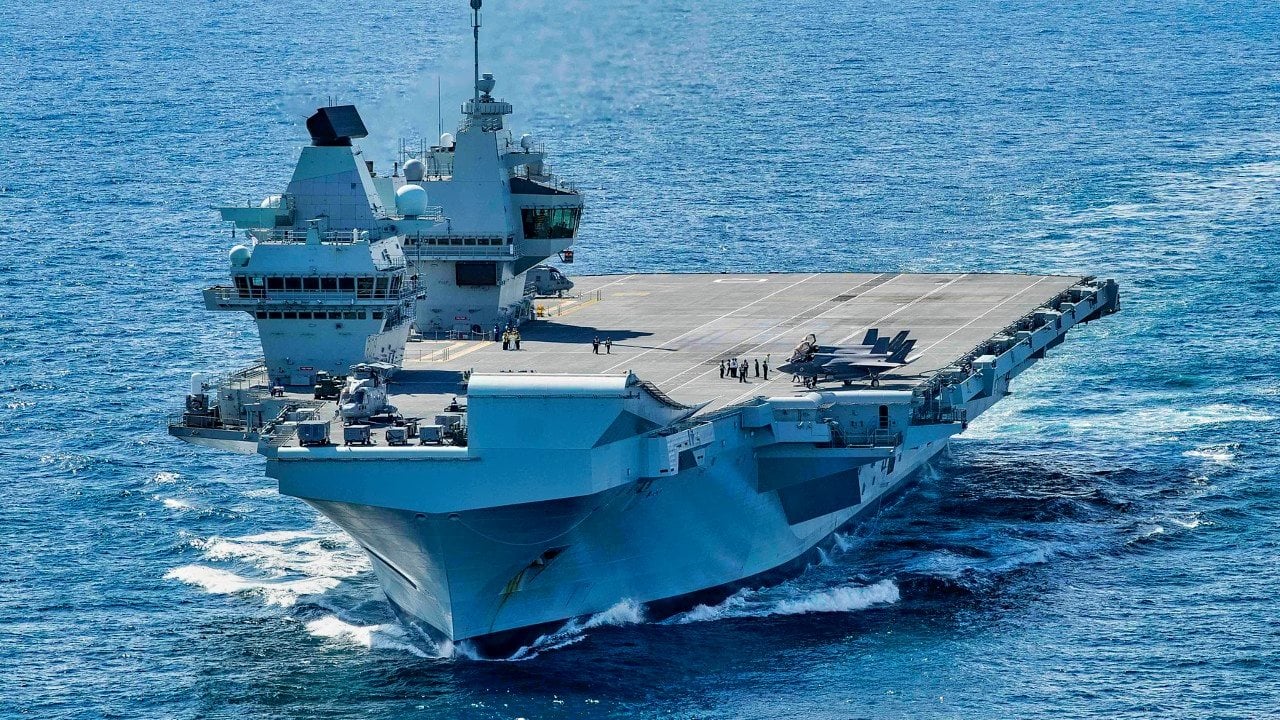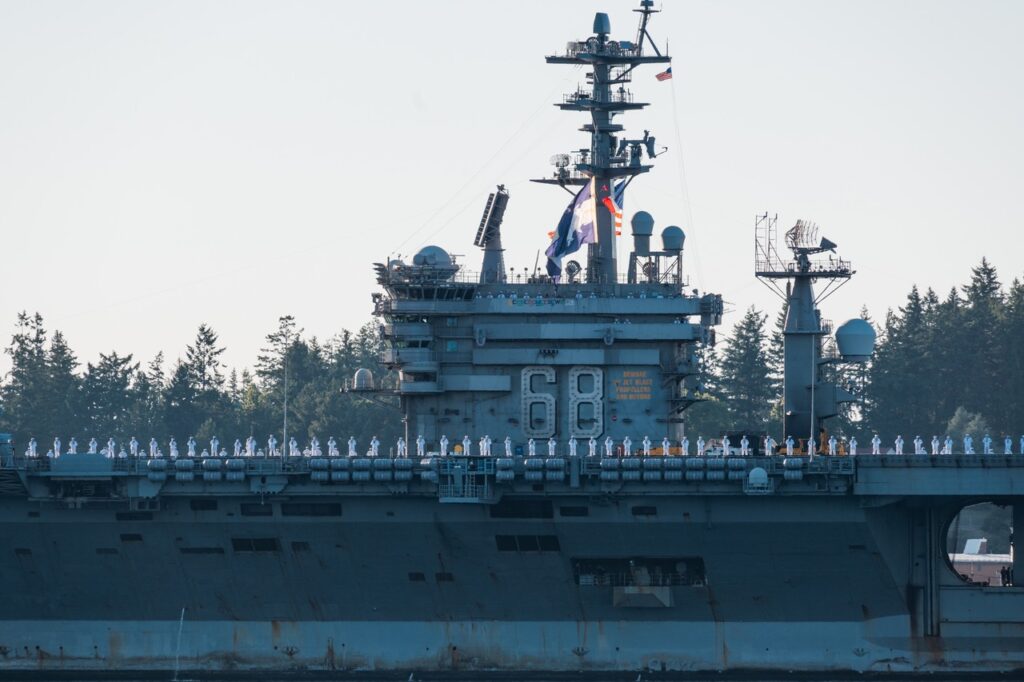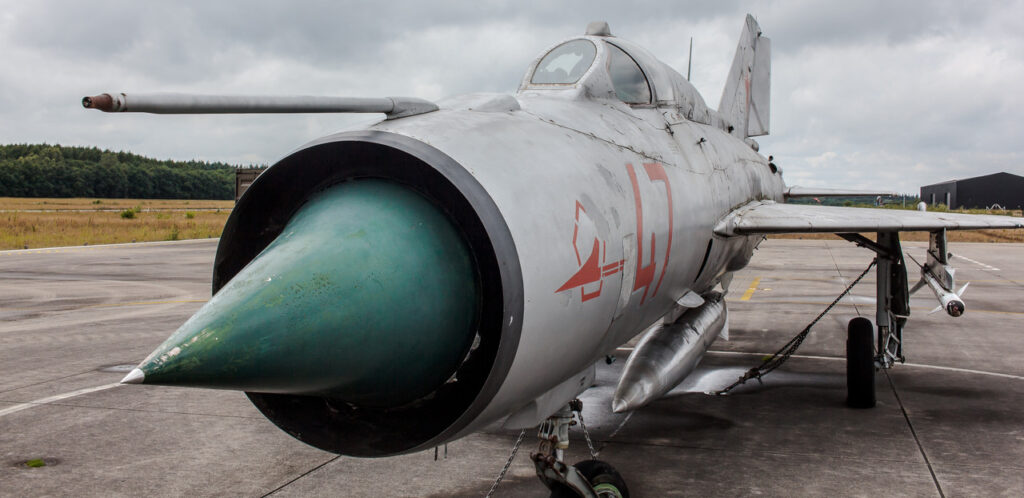
The Age of Aircraft Carriers for the Royal Navy Is Now Completely Over
Summary: The British Royal Navy faces significant challenges in maintaining its new aircraft carriers, HMS Queen Elizabeth and HMS Prince of Wales. These carriers, intended to revive Britain’s military prestige, have proven costly and difficult to sustain.
Key Points and What You Need to Know: Royal Navy Aircraft Carrier Problems
-The Royal Navy has struggled with funding issues, maintenance problems, and insufficient support ships. Critics argue that Britain, now a middle power, should focus on more practical maritime capabilities like submarines and amphibious warships to address regional threats, particularly from Russia.
-The investment in carriers is seen as a vanity project that diverts resources from more essential defense needs.
Are Britain’s New Aircraft Carriers a Costly Vanity Project?
When she vowed to put the “great” back in “Great Britain,” Lady Margaret Thatcher was presiding over a post-imperial Britain in transition from her position atop the international system to a new place, a lesser location, somewhere in the middle. Back in the 1980s, when Thatcher reigned, Britain could still go through the motions of being relevant.
But it was purely superficial.
Since 1945, and certainly following the Suez Canal Crisis, Britain’s days as a dominant world power were over.
The best she could do was to nestle alongside another greater power and seek to behave as the equivalent of a remora on the body of a shark.
Even when Thatcher surprised her American allies and resisted Argentina’s attempts to seize the Falkland Islands, there was much concern among Thatcher’s own military leadership, because the British military had been so thoroughly gutted by 50 years of decolonization and national economic failures. The Falklands, though, were more like Britain’s last hurrah, rather than a revitalization.
Putting the Great in Great Britain? Not So Much.
At the end of the Second World War, there is an apocryphal story in which the head of the US Navy’s Atlantic Fleet was saying farewell to his British counterpart. The American decided to tease his British colleague by inquiring how it felt to be in command of the second-largest navy in the world. The British admiral, in his typically unflappable British manner, retorted that it was better than being in a second-rate navy.
But even the pride of previous British maritime dominance could not keep the Royal Navy afloat. Budget cuts, lack of political leadership (or strategic vision), and the loss of her overseas empire completely gutted the once mighty Royal Navy.
Thatcher envisioned her Falklands victory as reignited Britain’s lost sense of national pride and military greatness.
Sadly, that did not last.
By the time she was out of office, Britain had again lost the greatness Thatcher had dreamt of restoring to it. But some British leaders and military planners still dreamed of greatness. That was why, despite the limits inherent in being a middle-power, such as Britain is today, the British government decided to build an advanced aircraft carrier, the HMS Queen Elizabeth. It built a second advanced flat top, the HMS Prince of Wales.
More Like Bankrupting Britain
The only problem is that Great Britain doesn’t have the budget to sustain these aircraft carriers.
What’s more, these ships were built during a time in which many veterans of the modern Royal Navy argue that their storied branch is in its final death agonies. For example, back in 2020 it was reported that the British government spent $8 billion building the warships. But it lacked sufficient funds to stand up the aircraft needed for the aircraft carriers.
The Royal Navy had trouble scrounging to afford escorts and support ships that would be required to support and protect their new aircraft carriers. What’s more, the British government cannot afford to enhance their new aircraft carriers to be able to conduct amphibious landing operations. That the carriers could be upgraded to wage amphibious warfare was one of the key justifications Royal Navy planners made for cutting their one amphibious assault craft, the HMS Ocean, in order to help fund the construction of these aircraft carriers.
And while the British military has made up for its early shortfalls that were being reported back in 2020, there are now new problems afflicting its haphazard—and hollow—carrier force.
A “Cursed” Aircraft Carrier
Recently, the HMS Queen Elizabeth, which some Britons have taken to calling a “cursed” carrier, was “gutted”by a five-hour blaze that erupted on the ship as it was heading to port in Scotland for maintenance. The fire occurred in the ship’s living quarters and did not impact the ability of the warship to operate. But this isn’t the first time the Queen Elizabeth (or her sister ship, the Prince of Wales) have suffered with malfunctions.
In fact, the reason that the Queen Elizabeth was headed to Scotland was because, just as she was set to lead NATO’s largest maritime exercise, a problem with the warship’s engine was detected. Rather than lead the NATO exercises, Queen Elizabeth put to Scotland. Prince of Wales replaced her in the exercise.
But these problems highlight a larger issue facing the Royal Navy. Its reach exceeds its grasp. Britain today is not the Britain of the imperial days. London is not lavishing its military the way it used to because Britain lacks the economic might to do the things its war planners envision. The British government blew through limited funds, cut mission-critical assets, such as the aforementioned HMS Ocean, to engage in what amounts to an institutional vanity project. And the Royal Navy cannot sustain that vanity project. Maintaining these warships now threatens the rest of the Royal Navy’s more important, practical programs.
Whatever Happened to Being Practical?
The aircraft carriers should have never been built. Britain could have become a dominant player in smaller maritime capabilities. A carrier is only useful if one wants to—and can—sufficiently project power over vast distances. Britain does not need to go East of Suez, no matter how many times they say they want to.
Instead, Britain, as a regional power, should remain fixated on their backyard. Being so close to Russia means that London should be building up the capabilities, such as enhancing their submarine fleet, that would be most useful for deterring Russian aggression.
The new carriers symbolically threaten Russia. But Russia is unlikely to be deterred by the presence of aircraft carriers that Moscow knows London is having difficulty sustaining.
If Britain were serious about embracing its middle power status—of truly becoming great under those circumstances—they’d not be wasting precious resources on the aircraft carrier. They’d be building subs, amphibious warships, and other, more practical systems. If London doesn’t get the message soon, it’ll go from a middle power to a third-rate power, broke, isolated, and unable to defend itself.
About the Author
Brandon J. Weichert is a former Congressional staffer and geopolitical analyst who is a contributor at The Washington Times, as well as at American Greatness and the Asia Times. He is the author of Winning Space: How America Remains a Superpower (Republic Book Publishers), Biohacked: China’s Race to Control Life, and The Shadow War: Iran’s Quest for Supremacy. Weichert can be followed via Twitter @WeTheBrandon.
Image Credit: Shutterstock.


